After reverting to its old, conservative ways for a generation, the 2020 Hyundai Sonata is all-new and once again shaking up the midsize sedan segment with distinctive, eye-catching styling and above-and-beyond efforts everywhere you look. The Sonata did the same thing a decade ago, inspiring the far more stylish and well-executed competitors we see today, especially from Honda and Toyota. As such, Hyundai had to do even more this time around to clear the bar it did so much to raise.
That styling is chief among those efforts. The proportions are sleek and evocative of "Sportback" luxury models like the Audi A7. The body is sculpted without being overwrought. The face isn't classically pretty, but it's visually bold and uniquely accented by LED running lights that blend into the chrome trim that lines the hood and snakes around the windows. You can even get the new Sonata in a brash shade of yellow. The interior is handsome as well and sees a marked improvement in materials quality, while boasting some impressive, user-friendly in-car tech. All of Hyundai's safety and driver assistance technology is also present and is excellent.
It all adds up to the 2020 Sonata leaping back into the conversation as one of the best midsize sedans. It's a must-drive.
What’s new for 2020?
In a word, everything. Hyundai has re-engineered the Sonata from the ground up, restyling it with a coupe-like roofline and adding new safety and convenience features and further expanding its electrification efforts with an overhauled hybrid model. You can read more about what's new and different in our 2020 Sonata first drive review.
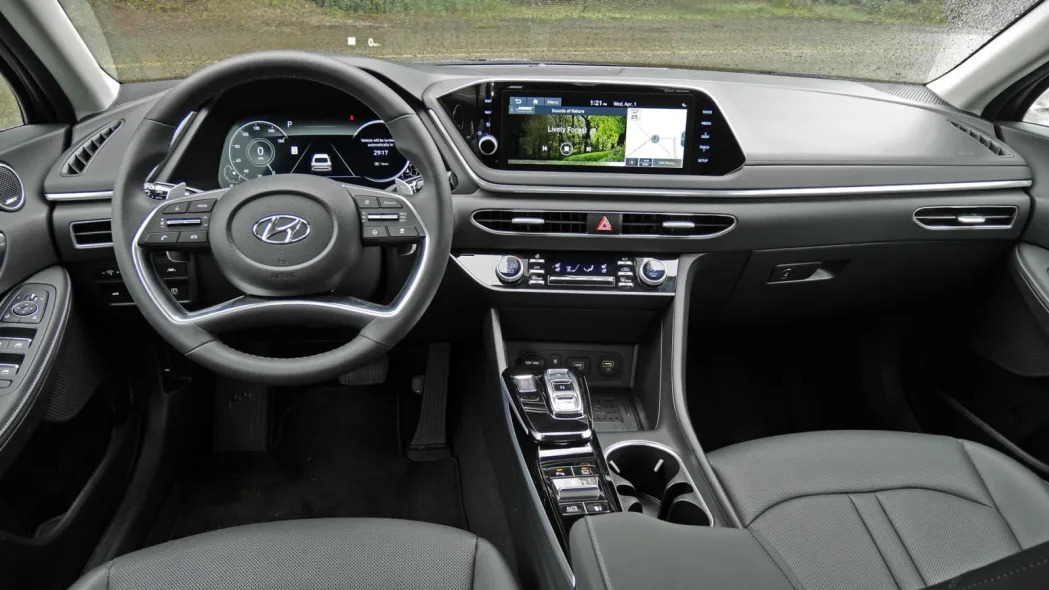

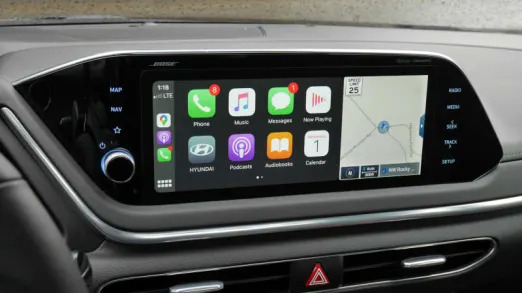
What are the Sonata’s interior and in-car technology like?
The 2020 Hyundai Sonata boasts a sleek, futuristic cabin with minimal clutter and high-quality materials. Like most new cars, its infotainment control screen is featured prominently atop the dash. Base models get an 8-inch screen, while a 10.25-inch touchscreen is optional from the SEL model on up. No other midsize sedan offers such a large screen, and as you can see in the video below, we think it's terrific. Behind the wheel sits a customizable 12.3-inch virtual cluster display (optional on SEL, standard on SEL Plus and Limited), and a full-color head-up display is also offered on the top-of-the-line Limited.
There are some nice touches for tech junkies, too, including Hyundai’s “Digital Key,” which allows the owner to unlock the Sonata by waving an authorized smartphone over the exterior door handles. Hyundai also offers Android Auto and Apple CarPlay integration as standard equipment. There are three USB ports and wireless charging is refreshingly not exclusive to the highest trim level.
Hybrid buyers are in for a special treat, as those who opt for the range-topping SEL Plus also get a solar roof. In sunny conditions, these panels can replenish up to 2 miles of additional range per day, or approximately 700 miles per year. More practically, they can power accessories while the engine itself is off, like the air conditioning on a sunny day.
How big is the Sonata?
The Sonata doesn't have as much backseat legroom as the palatial Honda Accord. The gap isn't as massive as the spec sheet suggests (we think there are differences in the way Hyundai measures interiors) and people taller than 6 feet can still sit one behind the other. You should also be able to fit a rear-facing child seat in the back without moving a front seat forward. Headroom is plentiful despite that sleek roofline, even more than the Accord and Camry, both on the spec sheet and in person.
The trunk offers 16.3 cubic-feet, which makes it bigger than every midsize sedan except the Accord. As we discovered in our Sonata luggage test, that figure translates into similarly impressive stuff-carrying ability.
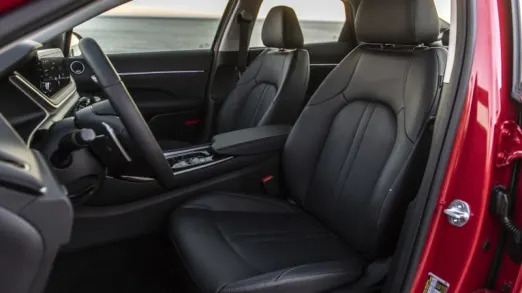
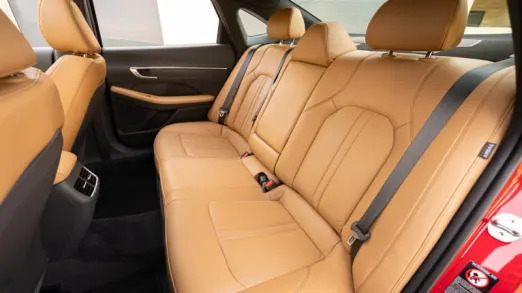

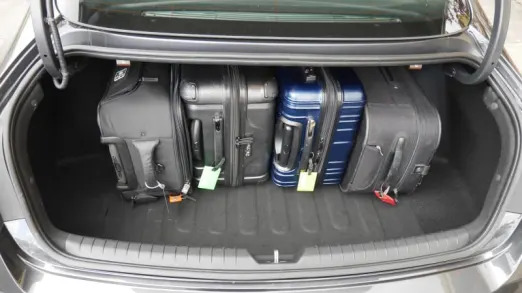
What’s the Sonata’s performance and fuel economy?
The 2020 Sonata is available with three different powertrains. The base engine in the SE and SEL is a 2.5-liter, naturally aspirated four-cylinder making 191 horsepower and 181 pound-feet of torque. These figures are typical for entry-level engines in the midsize segment. This engine is rated at 28 mpg city, 38 mpg highway and 32 mpg combined in the SE model and 27/37/31 in the SEL.
Stepping up to the SEL Plus and Limited models means switching to the 1.6-liter turbocharged four-cylinder. This engine produces less power (180 horses) than the base 2.5, but more torque (195 lb-ft). It likewise offers similar numbers to other lower-end turbocharged engines offered by the competition, such as the Honda Accord’s 1.5-liter. It even offers more power from a smaller package than the 2.0-liter turbo offered in the Volkswagen Passat. This engine is rated at 27 mpg city, 36 highway and 31 combined.
Unfortunately, the Sonata lacks a higher-output engine as it used to, and as most competitors continue to do.
However, there is a 2020 Hyundai Sonata Hybrid. It comprises a 150-horsepower, 2.0-liter naturally aspirated inline-four and a 39-kW electric motor. Combined, they produce a total of 192 horsepower. Hyundai says this combo is good for up to 50 mpg city, 54 highway and 52 combined in the Blue model, which is lighter (by a little more than 100 pounds) and sports smaller (16-inch) wheels with efficiency-focused tires. Hybrid SEL and Limited models top out at 45 mpg city, 51 highway and 47 combined. These figures compare favorably to the 2020 Toyota Camry and Honda Accord Hybrids. In terms of actual gas used, the difference between the 47-mpg trims and the 52-mpg Blue is actually pretty negligible.
What is the Sonata like to drive?
The 2020 Sonata features a MacPherson strut suspension in the front and a multi-link rear setup, which make for a comfortable and composed ride. Both the Honda Accord and Mazda6 are the superior athletes in this class, but the Sonata isn’t far behind, striking a neat balance between comfort and handling prowess for a daily driver. You probably won't have fun in it, but it's vice free and it won't bore you to death with completely anesthetized controls. Take the steering, which has linear, consistent effort and is sufficiently responsive to your inputs. We're also fans of Hyundai's new, nicely contoured four-spoke steering wheel.
Hyundai’s new CVVD engine technology debuts in the company’s 1.6-liter turbocharged four-cylinder, but you wouldn’t know anything special is happening had you not been warned. It’s a torquey little four-cylinder with enough grunt to get off the line in a hurry. There’s plenty of torque throughout the rev band; lag is minimal, and it’s pleasant enough to listen to. However, it's not a substantial performance upgrade – larger four-cylinder turbo engines from Honda and Mazda are still much quicker.
We haven’t driven a Sonata with the 2.5-liter naturally aspirated four-cylinder yet, nor have we had a chance to sample the new hybrid. We will update this guide when we do.
What more can I read about the 2020 Hyundai Sonata?
2020 Hyundai Sonata First Drive Review
Our first drive of the 2020 Hyundai Sonata was in a Korean-spec car overseas, but apart from the powertrain, it gave us a good idea of what to expect from the sedan when it came stateside.
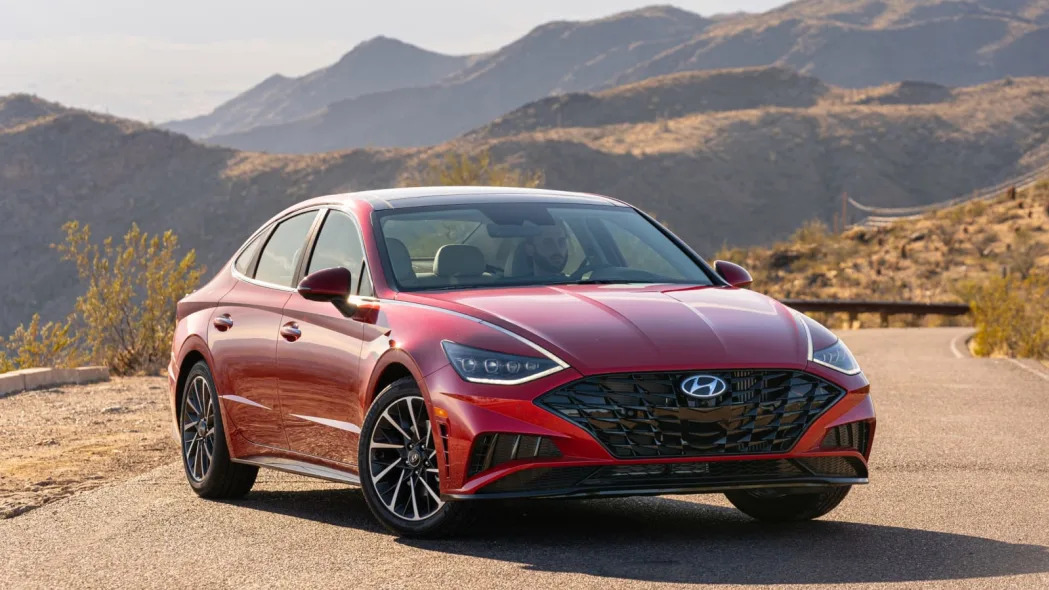
2020 Hyundai Sonata Driveway Test | Safety and Driver Assistance Tech
We break down the Sonata's well-executed and expansive array of safety and driver assistance tech.
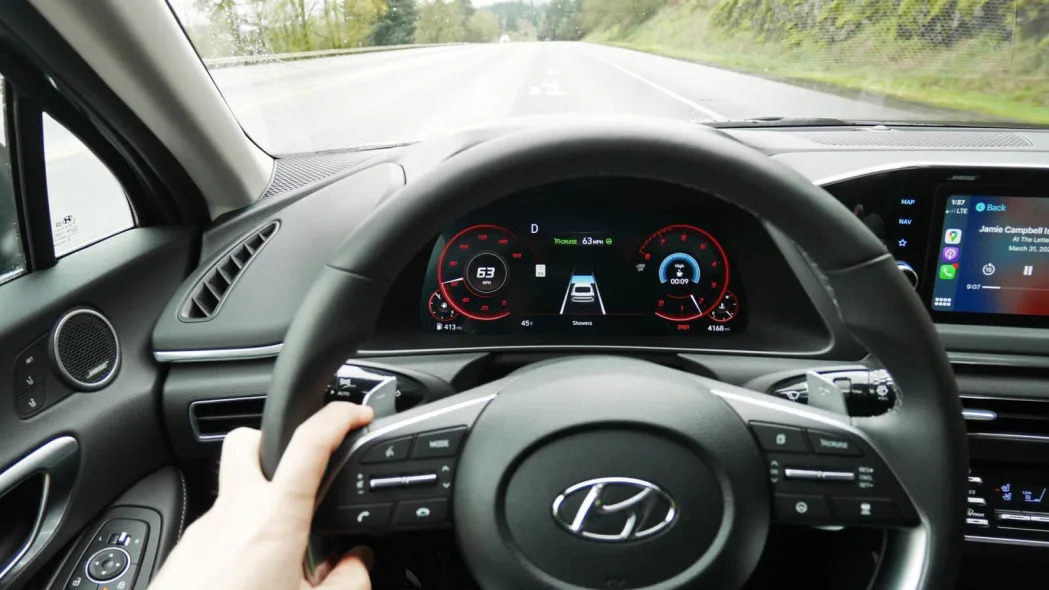
2020 Hyundai Sonata Driveway Test | Infotainment features and 10.25-inch touchscreen
In this review with video, we break down the Sonata's excellent widescreen infotainment system.
2020 Hyundai Sonata Hybrid vs Accord and Camry
The midsize sedan segment boasts several hybrid models. Here's how the Sonata stacks up against the Honda Accord and Toyota Camry hybrids on paper.

What features are available and what's the Sonata's price
The Sonata SE is robustly equipped for a base-model vehicle, but the true value leader is the SEL Plus, which includes the 1.6-liter turbo engine, 18-inch alloy wheels, suede and leatherette seating surfaces, Qi wireless device charging and an additional USB charge port — among other useful options — all for a $4,055 premium. That may sound like a lot, but it’s a great deal of equipment for a price below $30,000.
For a full breakdown of each trim level’s feature content, specs and pricing, check out our 2020 Hyundai Sonata page here on Autoblog.
- SE: $24,555
- SEL: $26,655
- SEL Plus: $28,605
- Limited: $34,455
Pricing for the 2020 Sonata Hybrid has not yet been released.
What are its safety equipment and crash test ratings?
Standard safety equipment on the 2020 Sonata includes forward collision warning with pedestrian and cyclist detection, automatic emergency braking, a driver inattention warning system, lane keeping assist with lane centering, a rear occupant alert system, automatic high beams and adaptive cruise control. All but the base SE get a blind-spot warning system, which is upgraded in the Limited with the complete, multi-faceted array of blind-spot tech that we named Autoblog Technology of the Year (see video below).
Besides the sheer volume of these safety and driver assistance features, we've found them to be among the best-executed on the segment. They do their job well without annoying you.
The 2020 Sonata Limited received an IIHS Top Safety Pick rating, falling short of the coveted Top Safety Pick+ due to the weaknesses of the headlights offered as standard equipment on the SE, SEL and SEL Plus trims. The government (NHTSA) has not yet evaluated the 2020 Sonata.
Related Video:

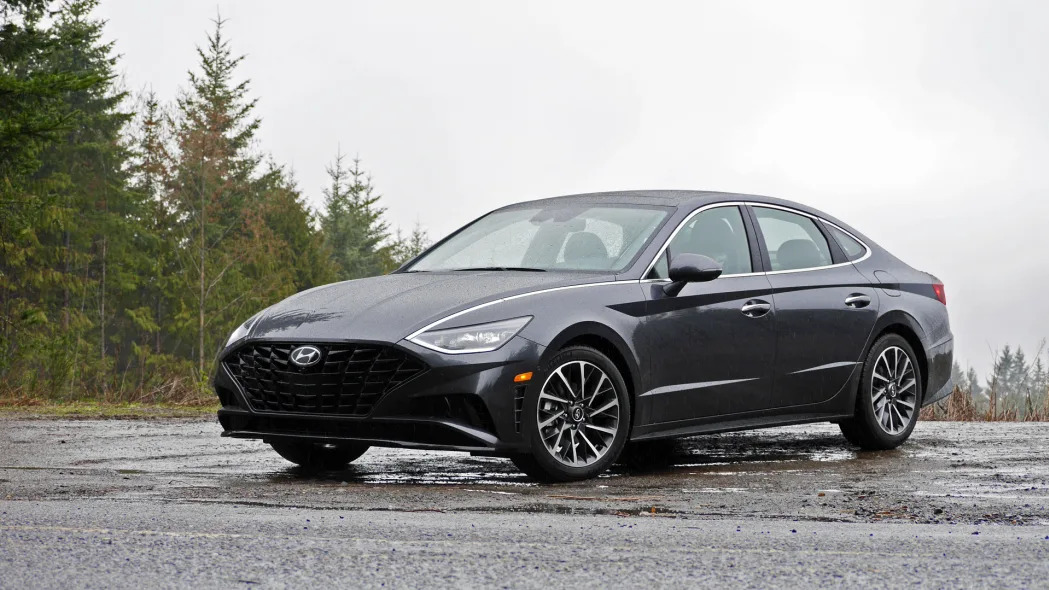
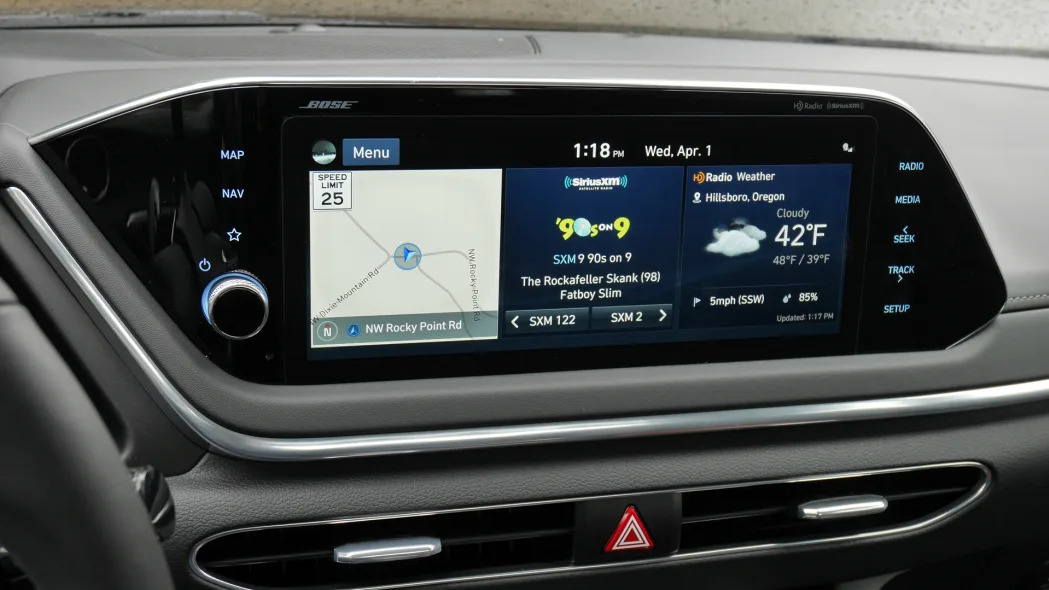










Sign in to post
Please sign in to leave a comment.
Continue